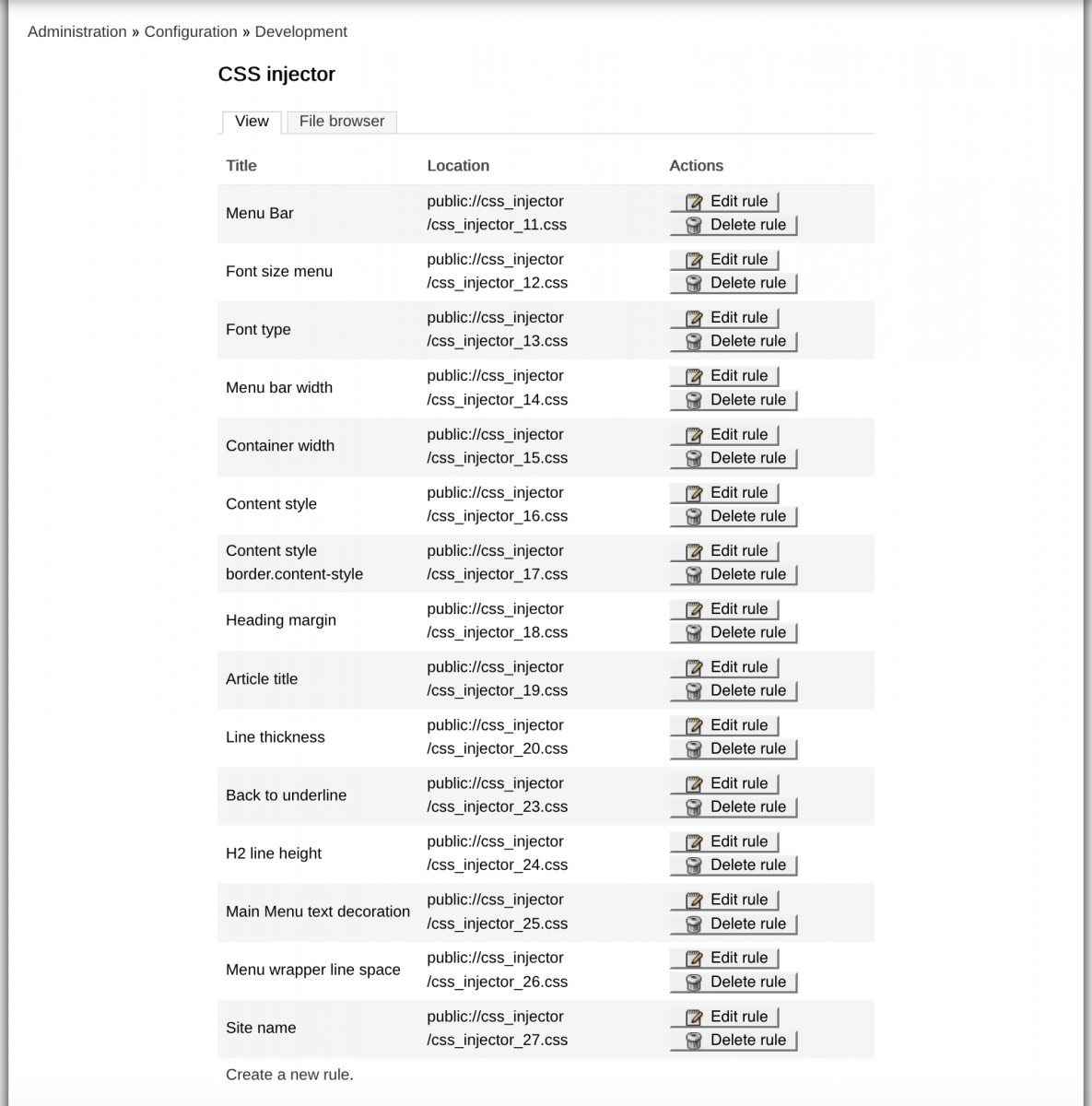Microlearning
The following microlearning project came about as I was creating this portfolio for USMx: LDT100x Instructional Design and Technology: Learning Theories.
Tool
Objective
To learn how to use the CSS injector module on my Drupal website in order to make changes to some of the website’s theme attributes.
Methodology
The main objective was broken into smaller tasks using the associated resources that were available.
- Understand the terminology of website design and Drupal’s interface
- IS&T help section
- Lynda.com
- Drupal for Dummies
- Explore which theme attributes could be changed using the tools included with the theme and which ones would need to be changed using the css injector module
- IS&T help section
- Experimentation - trial and error
- Learn how to use the CSS injector and the CSS coding I would need to make the desired changes.
- Drupal.com site help
- You tube video tutorials
- Google search for CSS formats
Learning Theories Applied
Andragogy
I used the five assumptions Malcolm Knowles identified in his research in adult learning theory. (Pappas, 2018):
Self Concept: Adult learners are independent and self directed.
This was a learning that had to be self directed. Even though it was in the context of a formal course (Instructional Design: Learning Theories) it was necessary to learn as the result of the choice I made when creating my portfolio. I had no instructor guidance that was related to this particular task.
Experience: Adult learners already possess a wealth of knowledge from life experience as well as any formal or informal education that’s been undertaken.
I have had previous experience with learning software applications, as well as a general knowledge about how html works.
Readiness to Learn: Most adult learners come to the table because they need to learn something new due to a specific life circumstance.
I was focused and ready to learn this task because I had to learn how to use the injector module in order to create my portfolio.
Orientation to Learn: Adult learners want to immediately apply their new learnings to s specific situation, and therefore are focused on problem-solving rather than postponed content.
This was problem based learning, because as I was developing my portfolio, I encountered some issues with the theme that I wanted to change, but in order to do so, I would need to learn how to use the injector module in order to apply it to the immediate task at hand. IN the process, I ignored other content that was not relevant but may have been taught in a traditional learning environment.
Motivation to Learn: Adult learners are motivated by internal factors and therefore aren’t as interested in grades or rewards other than what the new learning can do for them.
I was motivated to learn how to use this module because I wanted my portfolio to have a certain appearance that was not possible without it.
Connectivism
Connectivism recognizes that knowledge is contained in networks of connected “nodes,” both internal and external.
I used networks of information available to me from my workplace that were contained in online databases and other resources–“external nodes.” These resources were directly available to me as a result of my employment, and therefore otherwise would not have been (at least at no cost.) And then I was able to use my internal nodes of previous knowledge to connect the new learning. ("Connectivism (Siemens, Downes)", 2017)
Social Cognitivism
Social Cognitivism theory states that people learn from one another by observing the behavior of a “model” and then using cognitive processes to determine whether or not to imitate it based on prior knowledge. I depended on watching videos of other people “modeling” the task I was trying to learn. And through trial and error, I was finally able to reproduce the task on my own, building upon the prior knowledge I already had. (Vinney, 2019)
My Ah-ha Moment
For me, the “ah-ha moment” came when after several trials and errors, I was finally able to connect all of the bits of information I had read and observed in order to create the solution to the problem. Upon reflection, I realize that this was a classic example of a “microlearning project” before I even knew what the term actually meant. For example, my approach is closely aligned to the characteristics of micro learning described by Morrison:
- I broke down the main objective (learning how to use the CSS injector) into smaller chunks of learning objectives that I would need to meet my goal.
- I actively used the learning content I identified at each step so that I was applying it in real-time.
- It was highly relevant to what I needed to learn at the time. I purposely skipped over instructions that were not completely relevant to the task at hand.
(Morrison, Oct. 9, 2017)

References
Connectivism (Siemens, Downes). (2017, February 04). Retrieved from https://www.learning-theories.com/connectivism-siemens-downes.html
Morrison, S. (2017, October 09). Microlearning Essentials: The What and Why. Retrieved July 1, 2019, from https://news.elearninginside.com/microlearning-essentials/
Pappas, C. (2018, July 30). The Adult Learning Theory - Andragogy - of Malcolm Knowles. Retrieved June 20, 2019, from https://elearningindustry.com/the-adult-learning-theory-andragogy-of-mal...
Vinney, Cynthia. (2019, January 20). Social Cognitive Theory: How We Learn From the Behavior of Others. Retrieved 6/16/2019 from https://www.thoughtco.com/social-cognitive-theory-4174567

